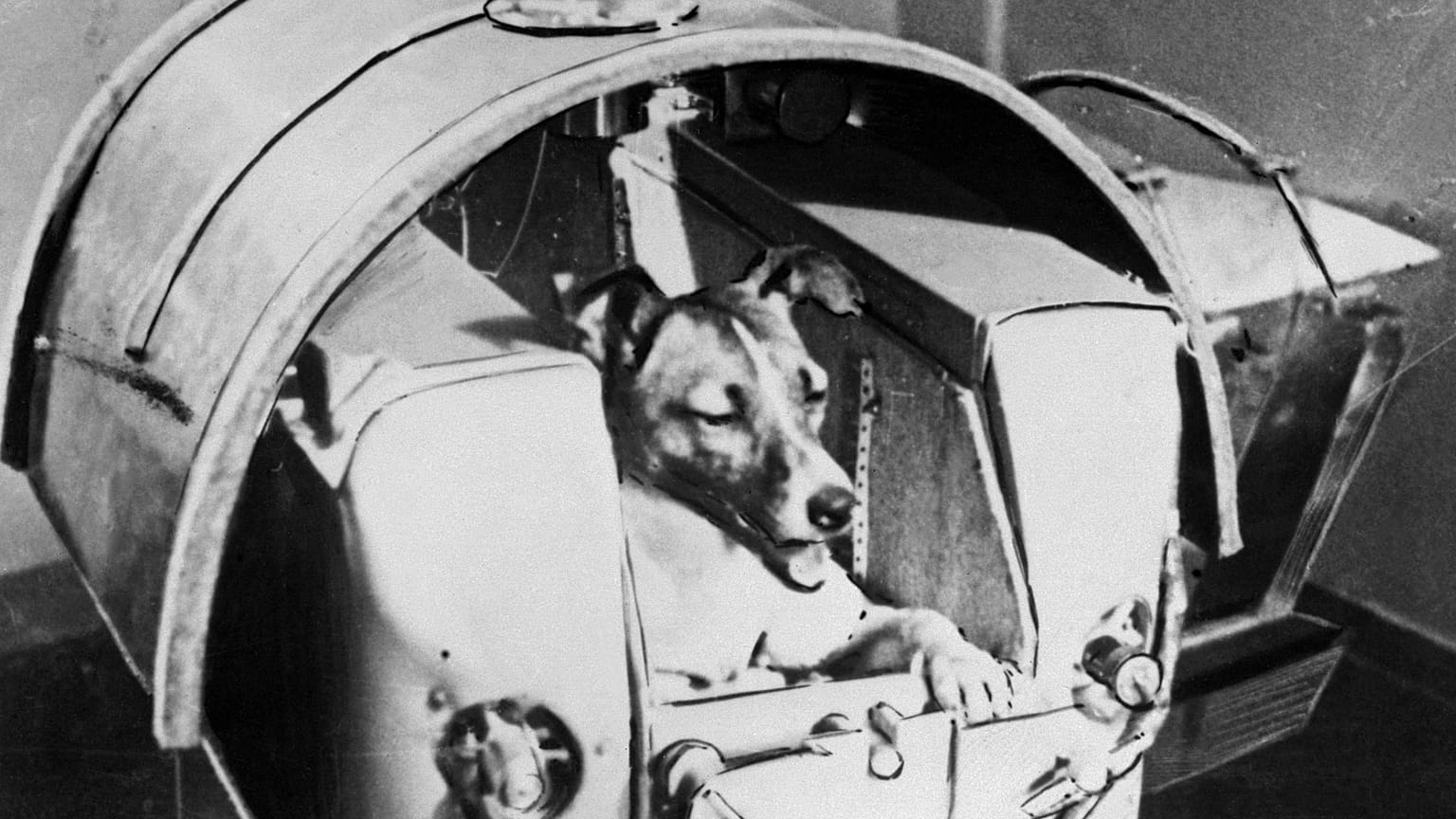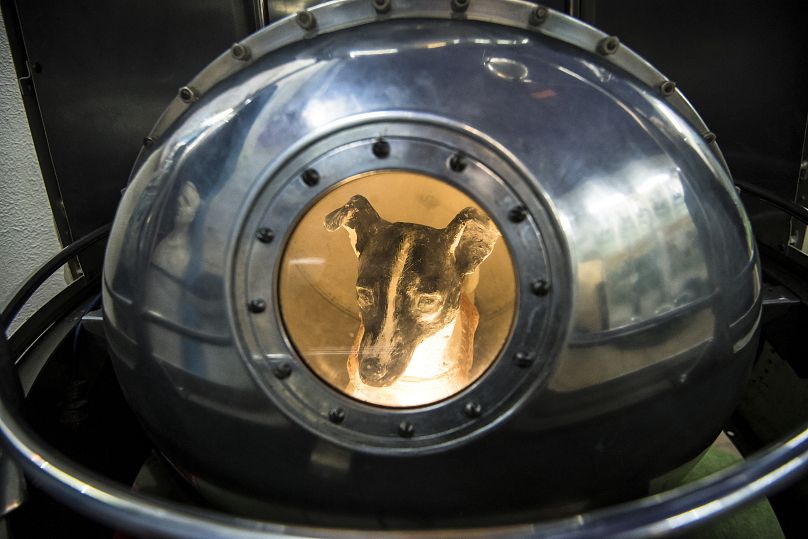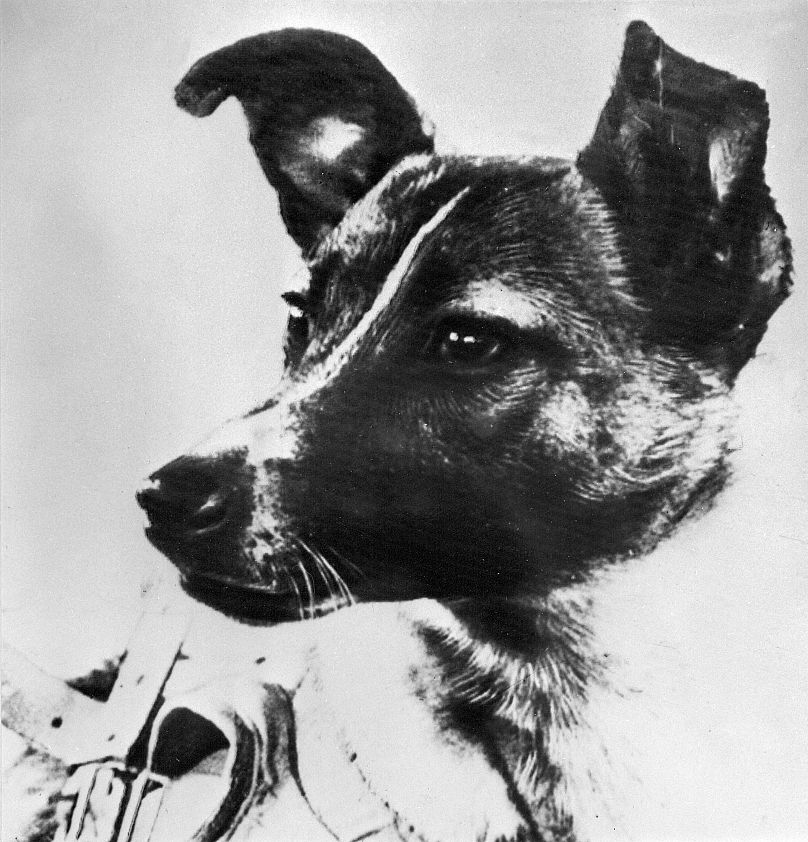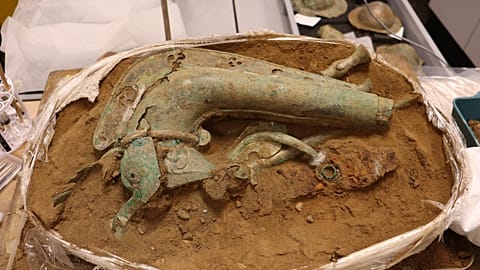3 November 1957: Laika becomes the first dog in orbit
“One small paw for dog. One giant leap for dogkind.” It’s what Laika would have said, if the poor dog had had any awareness of the historical achievement she was a part of.
Laika was the first dog to go to space as part of the USSR and the US’s bitter cosmological rivalry was at its peak during the Cold War. The US had already won the plaudits for the first living beings sent to space when they launched fruit flies inside a V2 rocket beyond the atmosphere in 1947. The fruit flies made it back to earth, seemingly unharmed. It’s unknown whether in the fruit fly community if they went on to successful careers as public speakers and science educators.
After the fruit fly success, the US started to send mammals up into space. First there was Albert the rhesus monkey. Albert’s trip in 1948 wasn’t exactly a success. It’s believed that he died due to failed breathing apparatus on the way up. If that didn’t do it though, when his rocket failed while still in the mesosphere, the impact when the rocket hit the Earth afterwards would have definitely done it.
Albert II was marginally more successful. His rocket breached the 100km Kármán line distance defining the edge of the atmosphere and space. This made Albert II the first mammal to reach space. Unfortunately, he didn’t get much time to celebrate as on his return to Earth, the rocket’s parachute failed and he crashed into the ground. Ouch.
The US continued to send monkeys into space during the 40s and 50s. Most of them met similarly grizzly fates.
While the Soviets were clearly trailing the US at their impressive ability to murder mammals outside of the atmosphere, there was still a record up for grabs – bringing a mammal back alive.
In 1951, the USSR achieved it when they sent the dogs Tsygan and Dezik into space AND bring them back to Earth in one piece. Either dogs were far more competent astronauts or the Soviets were doing something right.
Emboldened by their achievement, the USSR decided its next objective would be to send a mammal not just into space, but into orbit.
A career as an astronaut is often defined by years of dedicated training. You might have to spend decades as a hotshot fighter pilot or as an impressively athletic engineer to be in with a shot of a mission to space. In 1957, the criteria was a little looser.
Laika, the most famous dog to ever go to space, wasn’t a graduate of the USSR’s air force. Nor had she spent time in its most celebrated engineering universities. Instead, the Soviets just grabbed a stray mutt off the streets of Moscow. The job market really was easier to navigate back in the day.
A mongrel aged around three, the Soviet engineers figured life as a stray in Moscow would be ample training to endure the harsh realities of space travel.
Laika’s journey to become a cosmodog wasn’t a fun one sadly. Scientists placed her in increasingly small cages to prepare her for the confinement of her mission. She found this distressing and stopped urinating or defecating. Training also included time in centrifuges and acclimatising to the feeding methods.
The night before her flight, scientist Vladimir Yazdovsky took Laika home to play with his children, knowing her fate the next day.
Of three dogs trained, Laika was put in the Sputnik 2 spacecraft. It was launched from the USSR on this day in 1957. In Sputnik 2, Laika reached outer space before going into orbit. She survived for at least five hours before readings made it clear that Laika died in flight.
At the time, the Soviets claimed they had euthanized Laika through a poisoned portion of food. Another story circulated that she had asphyxiated. It wasn’t until 2002 that Dimitri Malashenkov, one of the scientists involved confirmed that Laika had died of overheating.
Despite her death, Laika’s impressive record as the first mammal to achieve orbit has given her an international cultural legacy. She was the face of a brand of Soviet cigarettes, is the subject of an Arcade Fire song, and inspired the Marvel character Cosmo the Spacedog.
More significantly, she also prompted an international conversation about animal testing. Arguably, it would have been more difficult to ever send humans to space without a sense of the mission’s survivability from animal testing, the casual indifference to animal lives in the pursuit of the space race was mostly dropped, and animals more reliably returned home.




















